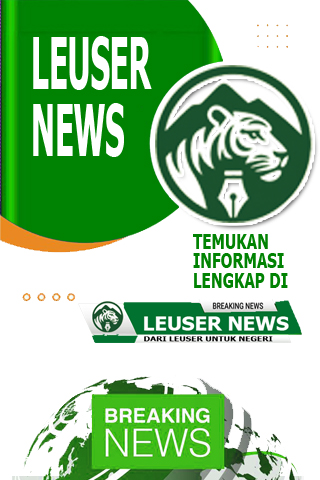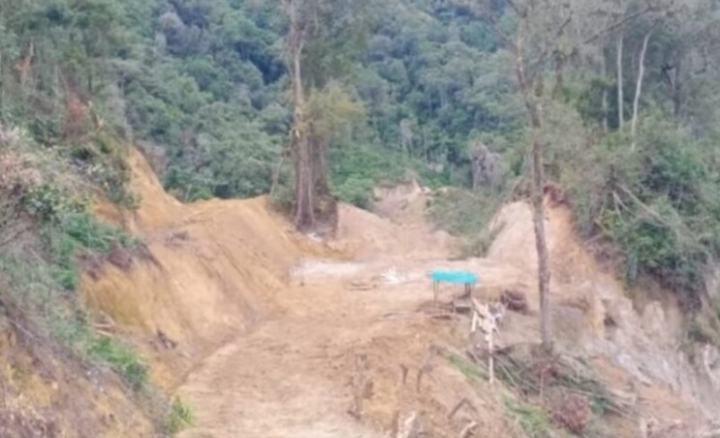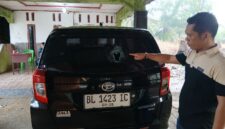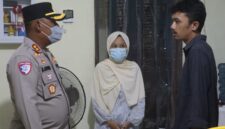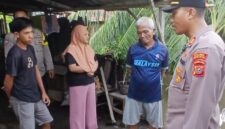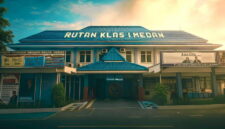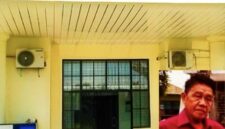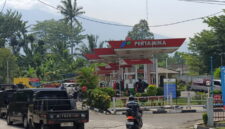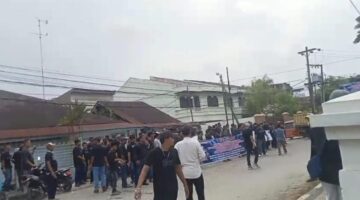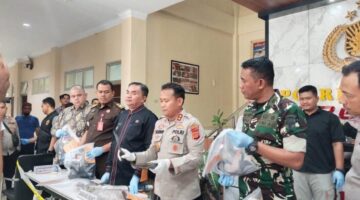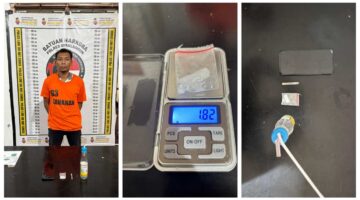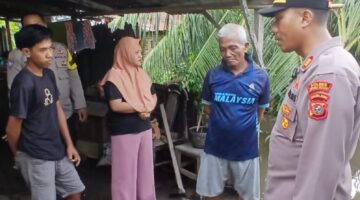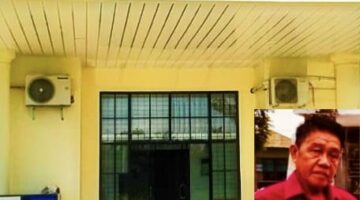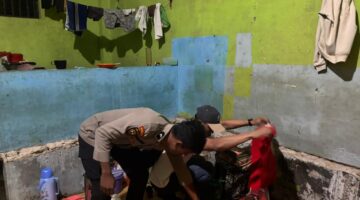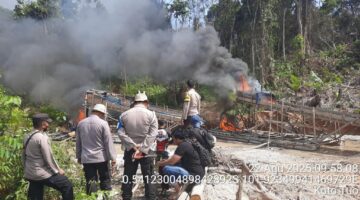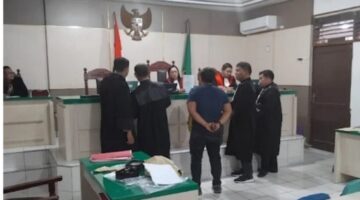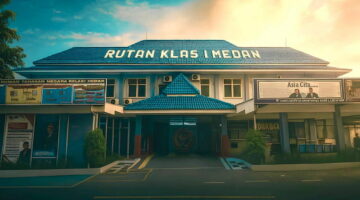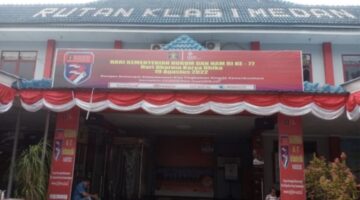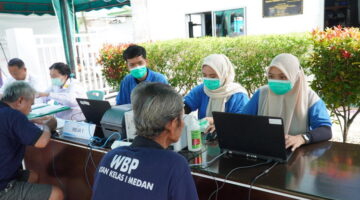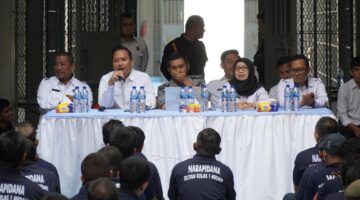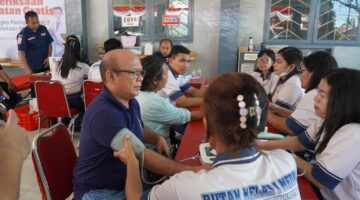GAYO LUES | On paper, PT Gayo Mineral Resources (GMR) claims to be conducting a legal gold exploration project—authorized by the government and, supposedly, following proper procedures. But on the ground, the story playing out is far different from the narrative built in boardrooms and documents. In the Tangsaran highlands of Gayo Lues—a critical buffer zone of the Leuser Ecosystem—the so-called “legal exploration” raises serious concerns about legality, ethics, and the region’s ecological future.
An investigation by the Leuser Aceh Institute (LLA) has uncovered serious irregularities. The mining block labeled as “Lokop Gayo Lues” in PT GMR’s official maps is, in fact, geographically misleading. The actual site is located in Kenyaran Village, Pantan Cuaca Subdistrict, Gayo Lues District—far from Lokop in East Aceh. Even more suspiciously, the coordinates referenced in some of the company’s documents point to locations in North Maluku—over 3,000 kilometers from the real site. “This is not just a mapping error. This is a deliberate attempt to obscure the true location and mislead the public,” said Abdiansyah, LLA Secretary, in a statement issued on July 25, 2025.
Abdiansyah questions the entire legal basis for the project. “If the maps are fake, and the coordinates don’t match reality, how on earth could this permit be considered legal?” he asked. He warned that the actual exploration zone cuts across protected forest, limited production forest, wildlife sanctuaries, and even core zones of the Gunung Leuser National Park—one of the last remaining intact rainforests in Southeast Asia.
ADVERTISEMENT
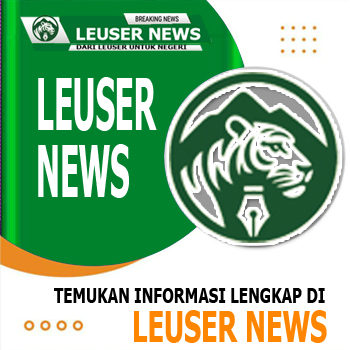
SCROLL TO RESUME CONTENT
In theory, national environmental regulations should prevent such incursions into critical ecosystems. But in GMR’s case, those laws appear to have been bypassed, ignored, or outright violated. The company proceeded without publicly available Environmental Impact Assessments (AMDAL), without forest area borrowing permits (IPPKH), without disclosing exact coordinates, and without any community consultations in affected villages. The violations include at least five major laws and regulations: Indonesia’s Forestry Law (No. 41/1999), Environmental Protection Law (No. 32/2009), the Mineral and Coal Mining Law (No. 4/2009), Government Regulation No. 104/2015, and Minister of Environment and Forestry Regulation No. P.27/2018.
Most shockingly, the residents of Kenyaran Village—the frontline community—were kept in the dark. No meetings, no public disclosure, not even a letter of notification. One day, heavy machinery simply arrived, operators began drilling, and the forest began to open up. The river turned muddy, the water level dropped, and the sound of wildlife began to vanish. “We rely on this water, this forest, our land. Now we just watch them come in like thieves in the night,” said one villager, requesting anonymity for safety.
Meanwhile, the nerve center of PT GMR lies far from the cries of displaced wildlife and the rumble of excavators. According to LLA’s investigation, the company’s registered headquarters is located at Bakrie Tower, 8th Floor, Rasuna Epicentrum, Jl. HR Rasuna Said, South Jakarta. From this sleek, air-conditioned office, decisions are made that affect one of the world’s last ancient rainforests—without a word to the Indigenous communities whose survival depends on it.
PT GMR claims it has obtained a two-year exploration permit from the Indonesian government. But none of the official documentation has been made publicly available. “We’ve requested the AMDAL, the working area map, any legal documents. Nothing has been shown. If the coordinates are wrong, if there’s no IPPKH, no consultation, then this permit is either fake or fatally flawed,” said Abdiansyah.
Beyond legal infractions, the project has begun to disrupt the delicate socio-ecological balance of the region. As streams become polluted and farmland degraded, what is at risk is not just forest or species—it is the cultural and ecological identity of communities who have served as guardians of this land for generations.
LLA is now formally demanding the Ministry of Environment and Forestry (KLHK), the Law Enforcement Agency for Environment and Forestry (Gakkum Sumatra), and the Governor of Aceh to revoke PT GMR’s exploration permit. They have also called on the Indonesian Ombudsman to launch a full audit of the permit process. More gravely, LLA urges the Corruption Eradication Commission (KPK) to investigate suspected collusion and foul play in the licensing process. “We suspect this is more than administrative negligence. If proven, it could qualify as environmental corruption involving bureaucrats and corporations,” said Abdiansyah.
LLA has also forwarded the report to international watchdogs monitoring the Leuser Ecosystem as part of the Tropical Rainforest Heritage of Sumatra (TRHS), a UNESCO World Heritage site. “This isn’t a local conflict. It’s state-sanctioned neglect of a globally protected ecosystem,” Abdiansyah added.
The GMR case is a grim reminder of how maps can be forged, laws sidelined, and ecosystems sacrificed under the guise of “investment.” If Indonesia fails to act decisively, history will remember that one of the world’s last great rainforests was sold in silence—without debate, without consent, and without justice. (*)
